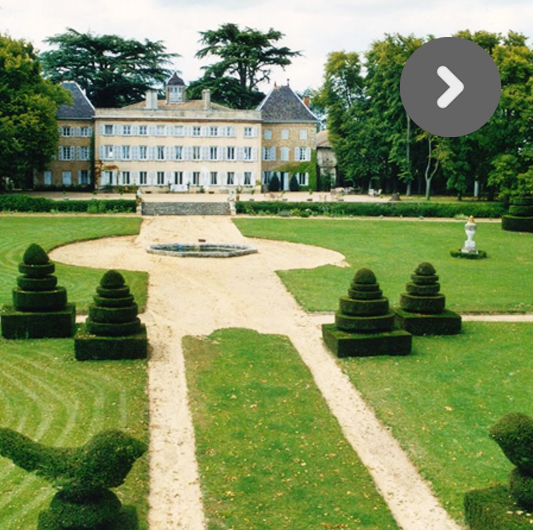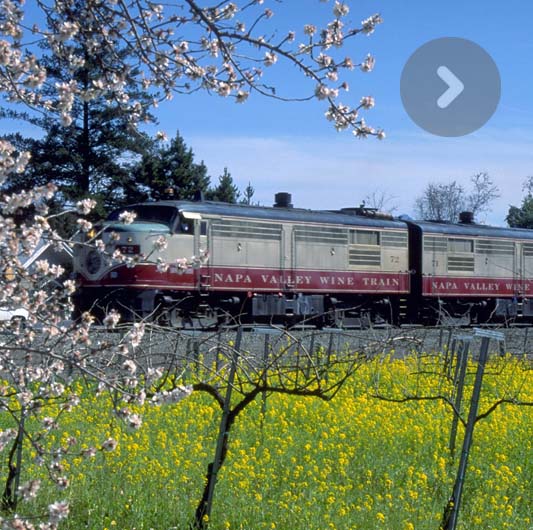The Madiran and the Pacherenc
The Alliance of dark fruit and white flowers.
A small territory with about 1600 hectares of vineyards, 200 of which are reserved to the Pacherenc of Vic-Bilh. A territory that encompasses the villages of Lembeye and Garlin and that produces a white AOC wine. The Pacherenc is at home on siliceous-clay soil, while the red Madiran prefers clay-limestone soil. Four grape varieties make up the AOC Madiran. The tannat grape, which makes up the largest proportion of the blend, gives the wine its frame and character. The cabernet franc, the sauvignon and the fer-servadou grape varieties complement each other and, depending on the blends, allow one to play with an entire range of aromas.
The Pacherenc, in sweet or dry variations, are produced from petit manseng and petit courbu grapes that are then complemented by arrufiac, gros manseng and sauvignon grapes. The Madiran expresses aromas of dark, over-ripe fruits. Tannic, it is full and generous on the palate. As it ages, the Madiran becomes velvety, silky, with notes of spices. A wine to put down. The dry Pacherenc, fatty and with an incredibly long finish, develops notes of white flowers. The sweet variety is franc and fresh at first taste, which surprises and brings out aromas of candied fruit and honey. A smooth wine.
Morlaas
Château de Morlanne. The mediaeval castle was built in 1373 for the half-brother of Gaston Fébus, the count of Foix. Restored and modernised in the sixteenth century, the château holds quite a remarkable collection of paintings, furniture and tapestries. The château de Morlanne with the fortified church dating from the fourteenth and fifteenth centuries form a typical example of the Vic-Bilh fortified villages. Visits from the 1st April to the 31st October. Tel.: +33 5 59 81 60 27
Lembeye
Lembeye was the political, religious and commercial capital of the Vic-Bihl, meaning “the old country” or “the well located place”. Fertile grounds in the depth of the Armagnac region that were highly coveted. Towards the end of the thirteenth century, the hamlet builds itself up into a bastide, of which only remnants of the clock tower, the Marcadieu square and the church subsist today; the church is the largest Gothic building in the Vic-Bilh.
The market. A very animated market where local produce is very well represented, every Thursday morning. Marcadieu square.
![]()
Chai Doléris. The underground wine store contains a collection of South-West wines. The exhibition hall showcases the old winegrowing tools. The cellar is reserved for tastings and wine sales. Three good reasons to make a stop there. Route de Pau. Tel.: +33 5 59 68 20 79
Restaurant de la Tour. The menu is traditional and includes garbure, confit duck breasts, but since it is so good, one never tires of it. Place Marcadieu. Tel.: +33 5 59 68 97 16
Garlin
Saint-John the Baptist Church. The late nineteenth century church is especially worth seeing for the composition of its thirty window panels by the master glazier Bergès in 1863.
Maumusson-Laguian
Château Bouscassé. Alain Brumont gave the Madiran its letters of nobility. Owner of the Bouscassé and Montus estates, a winemaker full of character and resource, he now sits at the head of 250 hectares split into plots broken up by woods. In 1979, Alain Brumont acquired the Château de Montus next to the Bouscassé family estate. It was in complete ruin. “Acidity being a wine’s spine”, Alain dares to try a 100% tannat wine, highly tannic, yet powerful and elegant. Its delicate and fragile skin requires it to be harvested by hand and then each bunch has to be chosen following five different steps, a lot of work but what a great result! The 1982 vintage gave Brumont a reputation and Château Montus its repute. The 1985 vintage, a Château Montus Prestige, produced from 100% tannat grapes and matured in new barrels, was awarded the fifth place. In 1988, Gault & Millau names Alain Brumont best winemaker of the decade, a consecration! Each year, Mr Brumont organises a confrontation between his wines and seven others among the most famous in the world. The 2010 edition of the “Rendez Vous des Icônes” (the Meeting of the Icons), the blind tasting placed the Château Montus La Tyre second and Alain Brumont’s pinot noir blend fifth, just after the 2004 Pauillac Château Lafitte Rothschild! Visits of the château Bouscassé, its artful gardens, punctuated with sculptures, ceramics and mobiles signed by Christian Soucaret, by appointment. The Château Montus remains a private estate and is not open to visitors. www.brumont.fr
Aurion-Idernes
Crampilh estate. The country house is hooked onto the hill. Its name “crampilh”, an Old Occitan word for something crooked or bent, comes from the grandmother Melanie’s family name. The estate’s wines, however, are very straight. The fourth generation of the family is represented by Bruno and Marie Oulié. With souls of winemakers, they cultivate the 30 hectares of vineyards sustainably with a majority of tannat grapes, the emblem of Madiran wines. The mono-varietal Madiran Vieilles Vignes blend is silky with aromas of liquorice and spices. They Pacherenc, Les Vendanges d’Automne, produced from 100% manseng grapes, is sweet and fatty and stays fresh on the palate with candied and exotic fruits on the finish. The impressive tasting room, topped by a high tower, opens up onto a terrace with a superb view of the vineyards. Visits from Monday to Friday by appointment. www.domaineducrampilh.com
Ariccau-Bordes
Château d’Arricau-Bordes. Built for the King of Navarre’s secretary and listed as a Historical Monument, its architecture is typical of the sixteenth century with its square towers and bartizans. This is one of the most beautiful properties of the Vic-Bilh and is thought to have inspired Alexandre Dumas’ Three Musketeers.
The Château d’Arricau-Bordes’ wine store. The wine estate is run from one of the château’s old outbuildings. Visits and sale of wine at the estate. During springtime, one can enjoy a botanical and wine-themed walk through the vines and the orchids. Tel.: +33 5 59 68 13 97

Aydie
Château Aydie Three generations of winegrowers have helped make this estate what it is. In 1930, the Laplace family turned from producing grapes to vinifying and bottling its wine on the estate. Following from that, amidst a system of polyculture, the children fought to maintain their vineyards faced with the growth of the intensive culture of corn. A land of heritage, that is shared, the Château Aydie estate is run today by François, Jean-Luc and Marie. A 55 hectare vineyard on diversified soils which enable them to produce some great wines and ten different blends. The Vin de Pays Gascogne, Aramis blend in red, rosé or white should be tasted. The Château Aydie produced from 100% tannat grapes, is top of the range and should be bought without hesitation. The “Belle Epoque” house attached to the vineyard is in fact a former outbuilding of the Château Aydie. The château was once the residence of the writer Joseph Peyré. Visits of the wine store and tastings by appointment. www.famillelaplace.com
Viella
Château de Viella. The estate, founded in the eighteenth century with its maturing wine store, is magnificent. And so is the discovery of the “Gardens of Aure”. Alain Bortolussi, the château’s owner, winegrower and gardener invites you to take a walk around the vines on his estate. A walking trail he created and has punctuated with a number of wine-themed creations. Pavilion, pergola, tree-house, herb garden, the visit ends up at the wine store with a tasting of the estate’s Madiran and Pacherenc wines. With prior notice, it is possible to take a picnic into the garden. Open Days with meals at the château are also organised. www.chateauviella.fr
Mascaraas-Haron
Château de Mascaraas. Built in the sixteenth and seventeenth centuries, the château is situated on the side of a fortified hill. A French landscaped garden with an orchard, a vegetable garden and vines wraps around the house, which holds an authentic collection of furniture in a dozen rooms that are still inhabited. The library contains some rare volumes and incanula. The kitchen is furnished with pieces from the Béarn region. A real museum. Visits by appointment. Tel.: +33 5 59 04 92 60
Madiran
Madiran had a monastery, a church and vineyards as early as the eleventh century. The monk Sancius from the family of the counts of Bigorre brought Benedictine monks from the Lot region. The church and the priory, once linked to the cloister, stand in the heart of the village as emblematic buildings.
Sainte Marie de Madiran Church. The inhabitants of Madiran also call it Our Lady of Vines. During the Wars of Religion, the church was burnt down upon the order of Jeanne d’Albret, a protestant and the mother of Henri IV. The statue of the Virgin Mary was found intact, a miracle! The priory’s church, a listed historical monument, has been restored. In Roman style, the unique nave and the Corinthian capitals with vegetable themes are outstanding. The crypt was constructed over the remnants of a gallo-roman temple dedicated to Jupiter.
![]()
Maison des Vins de Madiran. LThe Maison des Vins is adjacent to the priory. The space stretches over two floors and showcases the vineyard and the land of Madiran and Parchenec through a didactic journey that is generously illustrated. Specialists are on hand to give you all the information on the estates and cellars to visit and to advise you on your choice of wines. On the first floor, a laboratory allows one to learn about blind tasting and winemaking workshops are also organised. Each week a winemaker is put in the spotlight and presents the wines of his estate. After your visit, the wines of the Béarn will hold no secrets for you. Open all year. Place de l’Eglise. Tel.: +33 5 62 31 90 67
Restaurant le Prieuré. It is in the priory founded in 1088 and expertly restored that Lucie and Julien Cozzi settled to manage the hotel-restaurant of the Priory. The Priory offers a nice stop for wine and food lovers at the heart of the village of Madiran. For the meal, the chef Daniel Martineau has put some menus together: Return from the Market, Discovery, Land or Inspiration to choose from depending on your appetite. Either as a koulibiac or braised with four spices, the duck is served in many different ways with respect and creativity. We have a soft spot for the poached eggs with a cream of ceps and the green bean tartare, a recipe from the Tarbes region, dishes you’ll find on the “Return from the Market menu”. Affordable gastronomy. 4 rue de l’Eglise. Tel.: +33 5 62 31 44 52. www.leprieure-madiran.fr










